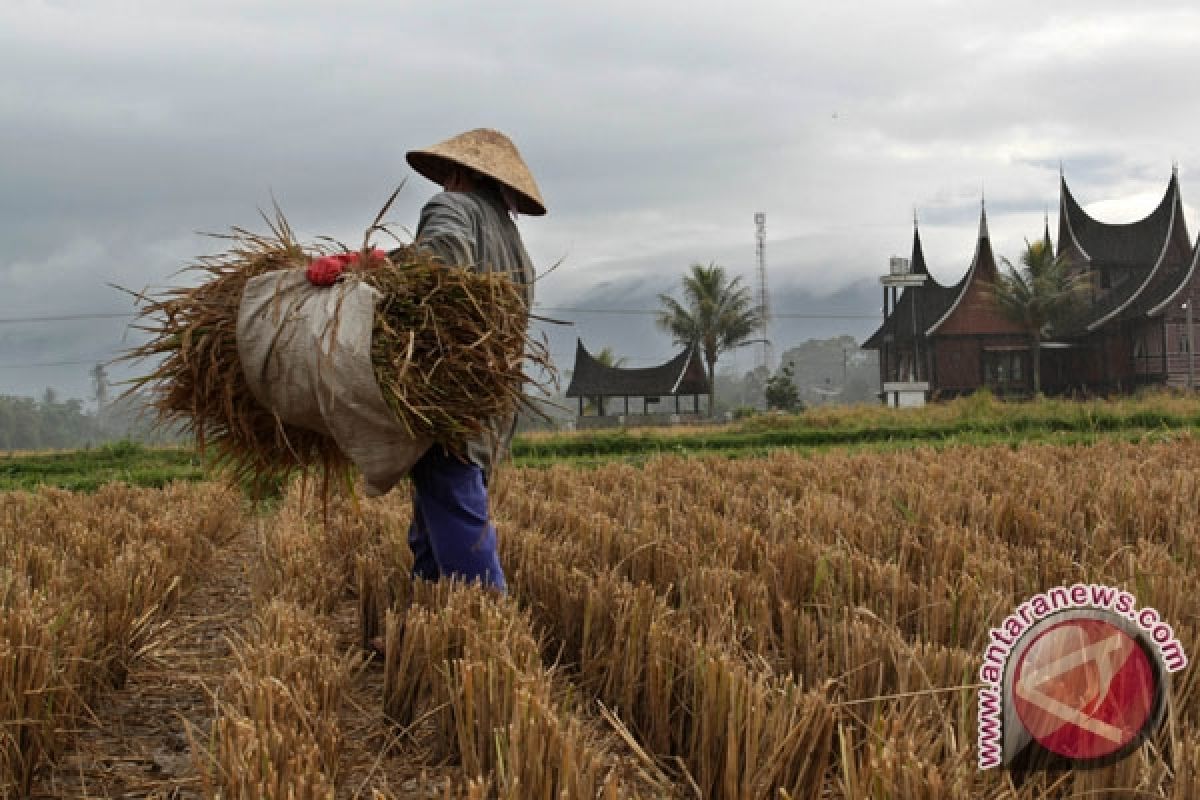The plan to begin planting this month is earlier than the normal planting season in the October-March period where drought has usually ended and rain has begun to fall in different parts of Indonesia.
Though rain is expected to begin falling in certain areas in Sumatra at the end of this month, yet Java is still predicted to suffer from drought until the end of October.
According to the Meteorology, Climatology and Geophysics Agency (BMKG), Western Sumatra, namely areas from Aceh, North Sumatra until Riau provinces, will begin to receive rain at the end of this month or in the middle of October.
In the meantime, the eastern areas of Sumatra, like West Sumatra, South Sumatra and Lampung, will enter the rainy season at the end of October or early in November.
Provinces in Java, from Banten, West Java, Central Java and East Java, are expected to enter the rainy season at the end of October or early November.
Yet, the government is planning to start rice planting earlier this month. "In order to cover the shortage of 2.538 million tons of the target, we will move forward the paddy planting schedule to September this month," Agriculture Minister said recently.
The government this year has set itself the target of producing 70.6 million tons of dry unhusked rice, up 7 percent from its previous year`s target.
But based on the forecast II figure of the Central Bureau of Statistics (BPS), the country`s unhusked rice production is predicted to reach only 68.062 million tons, 3.39 percent lower than the government`s target.
The minister said on Monday that drought has affected 95,891 hectares of rice fields in various regions of which about 3,713 hectares had failed to produce harvest yields, yet it is still considered within the normal level.
Earlier, the Indonesian Rice Hullers and Businessmen Association (PERPADI) has urged the government to intensify the country`s rice plantations in order to reduce the country`s dependent on imports. Rice plantation intensification needed a long-term, consistent and correct policy.
"Nowadays, nobody cares about the conversion of agricultural lands into malls and housing complexes, while the volumes of rice consumption continue to increase in line with the increasing number of population," PERPADI chairman Nellys Soekidi said.
At present the number of Indonesia`s population is about 237.6 million with a per capita rice consumption of 130 kg a year. With a growth rate of one percent, Indonesia will have a population of 300 million in 2030, agriculture observer Bungaran Saragih has predicted.
So far, Indonesia has been saved by importing rice to meet the need for the staple of its population and to enrich its domestic stocks.
According to Nellys, if exporter countries stop their rice supplies, it will be very dangerous to Indonesia`s national food resilience.
Nellys said that recently Indonesia through the National Logistics Agency (Bulog) imported 500 thousand tons if rice from Vietnam.
Data at the Indonesian Farmers Association (SPI) showed that Indonesia`s rice imports since 2010 have reached 1.84 million tons while prediction of rice production by the BPS this year is set at 37 million tons.
So, according to Nellys, it is quite possible that he volumes of Indonesia`s rice imports will continue to increase while its domestic rice production will continue to decline if it does not intensify its rice agriculture.
The government should open up new land for rice farm in order to increase production and cover its rice shortage. After all, the government this year is predicted to fall short of 2.5 million tons of unhulled rice from its target.
Virtually, Indonesia has the potentials of 4.79 million hectares of lands that can be planted with paddy during the2011 - 2012 rainy season, namely during the October 2011 - March 2012 period.
However, Head of Agriculture Ministry for Agricultural Research and Development Haryono said that right now, of the 4.79 million hectares, only about 504 thousand hectares could be planted with paddy and 529 thousand hectare others could be planted with maize.
He said that these were located in areas with normal rainfalls.
Yet, rice fields located in areas whose rainfalls were above normal and could be planted with paddy reached 812 thousand hectares while those whose rainfalls below normal reached 599 thousand hectares.
"We are now waiting for details from the BMKG on the zoning group areas related to the rainy season before we could issue a calendar on paddy planting schedules," Haryono said.
He said that farmers should use paddy variety seeds which were resistant against dryness when they wanted to plant paddy in areas whose rainfalls below the normal level.
On the other hand, farmers in areas whose rainfalls were above the normal level should use variety seeds which were strong against water inundation. Farmers were also called on to only plant secondary crops for fields which had experienced rice harvest failure.
(T.A014/H-NG/O001)
Reporter: by Andi Abdussalam
Editor: Priyambodo RH
Copyright © ANTARA 2011












